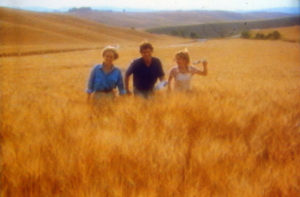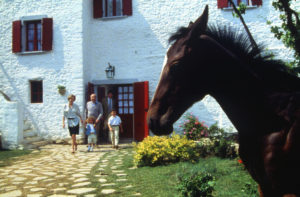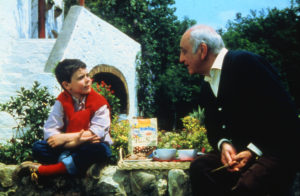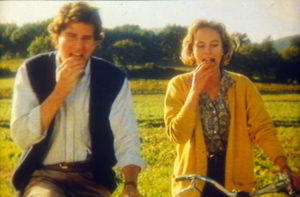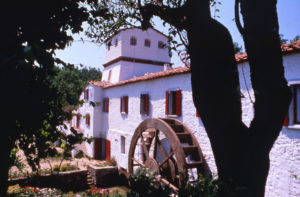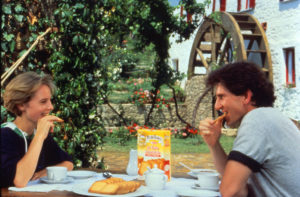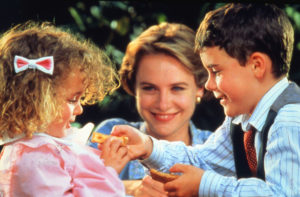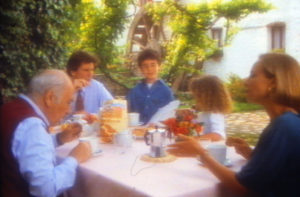The Mulino Bianco Families
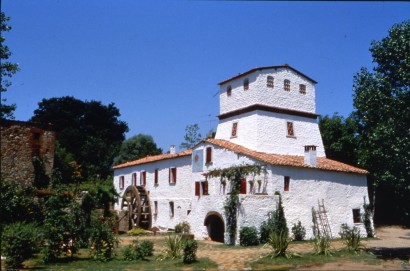
by Emmanuel Grossi
The idea to liven up the Mill and to make it a central element sending an entire family to live there revealed itself to be a winning concept. The mother, a teacher, the father, a journalist, and young Linda and Andrea together with their kind hearted grandfather, had entered into the hearts of people, who were touched and got passionately interested in their minimalist stories linked to nature and love for the animals, and permeated with good feelings and a touch of cheerfulness. The sun kissed days of springtime and summer went by smoothly at the Mulino delle Pile, where usually the children were the ones who would revive things by starting the family dynamics with games and pranks that were gladly looked upon with indulgence by the parents and grandfather.
With the passing of time, the family progressively breaks its closed system, so to avoid always proposing the same story schemes. Thus, it welcomes friends and relatives, it goes to town to do shopping or to support the father as a marathon runner, and the father, in turn, hurries to catch a sleeping car train so that he does not miss the morning ritual of breakfast together…
In 1993, after four years and about thirty different shorts, the need for a renewal was felt. The audience appreciation was falling and, besides tiring them out, there was a risk of falling into a conventional depiction in mannerism style. The critiques of intellectuals were not favorable either, as well as the parodies and ironic satire that flocked from everywhere. In common language, “the White Mill family” had become (and still is nowadays) a shady stereotype, very far from the intent and from the real atmosphere of the commercials.
Like the beautiful headline “Milano da bere” (Milan to drink) by Marco Mignani (the author of many advertising campaigns for Barilla and Voiello) had been polluted by political-judicial chronicles and was made void of the sense of alacrity, modernity and internationality that linked the city to its historical Bitter liqueur Ramazzotti, so the Family of the Mill had become the emblem of advertising deceitfulness, detached from the real world and everyday life.
In the years of Tangentopoli (1), of the war in Bosnia, of the Maxiprocesso (2) of Palermo, of the massacres of Capaci, of Via D’Amelio and Via dei Georgofili, for many people the stories of a family whose main preoccupation was to fly kites, take walks, building a cabin in the woods or spending time watching herons grated against real life issues.
In order to keep the relationship with Barilla alive, the Testa agency therefore commissioned a development of the series to creative directors Mauro Mortaroli and Erminio Perocco – who had recently come back to the Turin headquarters after directing the Rome offices. Their style signatures were humor and the use of Italian style comedy, and these had already won them their early prizes and successes (starting with the fortunate saga of “A telephon call prolongs your life” with Massimo Lopez for SIP, later Telecom).
Perocco recalls that in order to gain inspiration, they spent a few days inside the Mill, that in their proposal became even more so a protagonist. Up to then, in practice this had been presented as a farm barn with a water wheel. The idea instead now was to make it an inhabited place while entirely keeping the inner aspect and functionality of a real mill (as it happened twenty years later in the commercials with Antonio Banderas and the Nicole Grimaudo and Giorgio Pasotti couple). Instead of the usual family, two new ones entered the scene of country life so to allow for many new developments of the plot.
Everything seemed to indicate that the campaign would have been approved and put immediately into a production calendar… but – Perocco still recalls – shortly before the presentation date to the Company, Pietro Barilla died. It was 16th September 1993. His sons succeeded him, as they had already been at his side for some time, and in accord with the board of directors, the advertising communication of Mulino Bianco took a different path, more elegant, and in step with times, without betraying long standing values.
As usual, indeed, along with a proposal to develop the preexistent series, Marco Testa presented a second proposal with an international allure, commissioned to Alberto Baccari, an Italian creative director based in New York where for years he directed the American offices of the agency. And so it was that the main Art Cities started to bloom with grain, lawns and rivers.
But this is a different story…
NOTE
-
Tangentopoli – a scandal linked to corruption in public tenders
-
Maxiprocesso – literally “huge trial”, it was a historical trial held against the Mafia.
